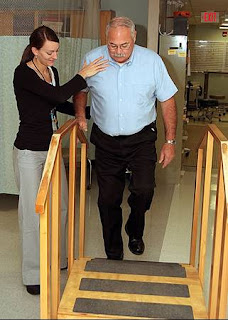There's no denying that the holidays have arrived.
Lights have been strung, gifts are being wrapped and holiday treats are everywhere.
It's no secret that most people gain 5 to 10 pounds over the next month. With all the parties, special meals and edible gifts, weight gain is pretty much inevitable...right?
Not so fast.
I've come up with a survival strategy to keep holiday pounds from making a permanent home on your hips.
This strategy is very simple. I'm not expecting you to have the time to log all your calories or eat every meal at home. We are going to be realistic...
Golden Tip to Avoid Holiday Pounds: Spend the next 4 weeks eating like a caveman, with 2 daily exceptions.
Here's why: Holiday pounds are caused by eating too many foods that are high in carbohydrates and simple sugars.
You can avoid all that by sticking with an eating plan created by our pre-historic ancestors, while still keeping things fun by allowing for 2 small daily exceptions.
This is what you would eat...
As many fresh and fiber-filled vegetables as you want.
- Load up on salads.
- Enjoy vegetable side dishes.
- Just no starchy vegetables like potato or corn.
- Stick with meat that has been roasted, barbequed, or baked.
- Avoid fried meats and eggs.
- Fresh fruit for a delicious dessert.
- A handful of nuts or seeds for a snack.
- Don't eat sugar-added fruits, nuts or seeds.
- Then enjoy 2 small exceptions...
- Starchy vegetables: Half of a cup.
- Baked goods: Should fit into the palm of your hand.
- Candies or confections: The smaller the better.
- Holiday drinks: 8 ounces.
When you navigate the buffet line at your next holiday party, feel confident knowing that you have a game plan. Stick with salad, vegetables and meats first, then pick out your 2 small exceptions and savor those.
Remember, I'm here to help you meet your fitness and weight loss goals.
Call or email today to get started on a fitness program that will turn your holiday weight gain into a holiday slim down.
You didn't think I was going to forget to mention the importance of exercise in avoiding holiday pounds, did you?
I know this month is extra busy. You will be tempted to skip out on workouts.
Decide right here and now that you will stick with your exercise schedule throughout the entire month of December. Write it into your calendar.
Exercise is your secret weapon against holiday pounds.
--
Hyunsuk Oh, DC, CCEP, CKTP, ART®, GT®
If you need more tips about holiday survival strategies, contact us at 301-953-0256 or sign-up at www.LaurelRegionalChiropractic.com for a free consultation!
Laurel Regional Chiropractic maintains an active presence on many popular search and social media websites. Select your favorite website below to stay connected or review us.
.
Laurel Regional Chiropractic maintains an active presence on many popular search and social media websites. Select your favorite website below to stay connected or review us.
Laurel Regional Chiropractic
9811 Mallard Drive Suite 218
Laurel, MD 20708
301-953-0256















